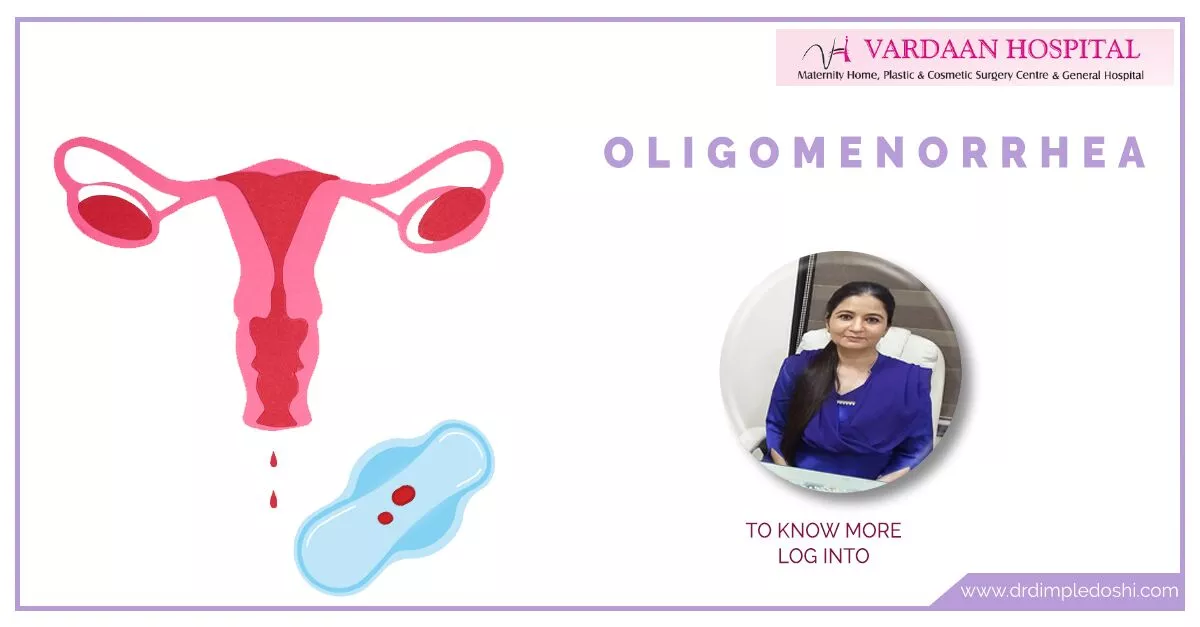Treatment for Oligomenorrhea in Goregaon West, Mumbai
Overview
Oligomenorrhea or scanty menses is defined as when you do not get your period for 35 days or more or when you have only 4 to 9 periods in a year.
The average menstrual cycle is 28 days, and anything from 25 to 35 days is considered normal. So do not panic if you miss a single period (of course in absence of pregnancy; birth control or menopause) in a year; but if you regularly go 35 days or more between periods; you should visit your gynecologist.
Oligomenorrhea occurs in about 13 to 14 % of the general population. This number increases to 20% when women have existing fertility problems.
ICD-10 Codes for Oligomenorrhea:
Oligomenorrhea refers to infrequent or irregular menstrual periods. The ICD-10 codes for this condition include:
- N91.1: Oligomenorrhea (for infrequent menstruation)
CPT Codes for Diagnosis and Management of Oligomenorrhea:
Diagnosis and management might involve several procedures, including tests and evaluations:
- 99201 – 99215: Office or other outpatient visits (for consultations or follow-up visits related to oligomenorrhea)
- 76830: Ultrasound, transvaginal (to evaluate the ovaries and uterus if abnormalities are suspected)
- 82105: Blood test for total testosterone (if evaluating hormonal causes of oligomenorrhea)
- 82670: Estradiol blood test (to measure estrogen levels)
- 83519: Follicle-stimulating hormone (FSH) test (to assess ovarian function)
- 83001: Gonadotropin test (to evaluate FSH and LH levels)

Dr. Dimple Doshi at Vardaan Hospital; believes prevention is better than cure, and thus apart from the precise treatment guidelines; preventive measures are an essential part of our consultations with the patients who have either had it or want to know more about it.
Causes of Oligomenorrhea
Oligomenorrhea in itself not a disease; but it may be the result of some medicines or underlying health problems like:
- PCOS or polycystic ovarian syndrome: PCOS causes imbalance in female hormone levels due to multiple fluid filled cysts in the ovaries; and production of abnormally high amount of male hormones called androgens. This is the most important cause of oligomenorrhea.
- Type 1 diabetes
- Use of hormonal contraceptives
- Intense physical activities in younger women.
- Certain medications like anti epileptics and antipsychotics
- Hyperthyroidism: In this condition; your body produces too much amount of thyroid hormones which enter the circulatory system and affect your menstrual cycle.
- Pelvic inflammatory disease: In this condition; like tuberculosis; the inner uterine lining or endometrium may get infected leading to oligomenorrhea.
- Asherman’s syndrome: In this condition; there is presence of scar tissue or adhesions inside the uterus which prevents proper development of the inner uterine lining and thus causes oligomenorrhea.
- Primary ovarian syndrome: It is also known as primary ovarian failure or premature menopause. Here the ovaries may function less than normal circumstances; so they may not produce adequate amount of hormones. And cause oligomenorrhea.
- Prolactinoma: It is a noncancerous tumor in your pituitary gland and is responsible for production of too much prolactin. This can lead to oligomenorrhea.
- Eating disorders like anorexia and bulimia
- Endocrine disorders like Cushing s syndrome and congenital adrenal hyperplasia
- Tumors in the ovaries or adrenal glands which release male hormones.
Diagnosis of Oligomenorrhea
Your gynaecologist will diagnose oligomenorrhea based on:
- History
- Physical examination to check for any lumps; tender areas or extra body hair
- Vaginal examination: by this examination your gynaecologist will check you for any infection; inflammation; scar tissues or growths.
- Blood tests to check your sugar levels; protein levels and hormones like FSH; LH; Prolactin; TSH ; testosterone and HbA1C.
- Ultrasound examination of the abdomen and pelvis.
- Additional tests CT scan or MRI may be done.
Treatment of Oligomenorrhea
The treatment of oligomenorrhea may be done to treat the underlying cause.
In most of the cases; dietary modifications; lifestyle changes and weight reduction help.
Complicatons Due to Oligomenorrhea
As mentioned before; oligomenorrhea itself is not a problem but it is the problem born by other conditions which if not controlled can lead to various health problems like obesity; osteoporosis; cardiovascular diseases; infertility or endometrial thickening .
So to keep your reproductive health in good shape; please speak to your doctor if you have any concerns about your monthly periods.

